| Home | First Posted June 25, 2010 Jan 21, 2020 | |
Russian Folk Dancingby Debora JohnsonRussia/St. Petersburg to Moscow River Boat Cruise On our river boat cruise the folk dance and folk music entertainment was really enjoyable. They performed every evening and gave a lively performance. The following is a picture I took of one of the dancers. I paint portraits and found this dancer's look quite interesting. 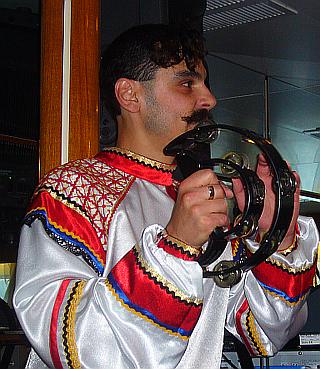 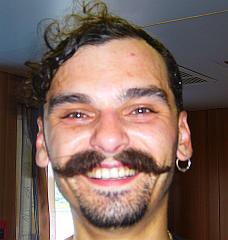 A fascinating face!
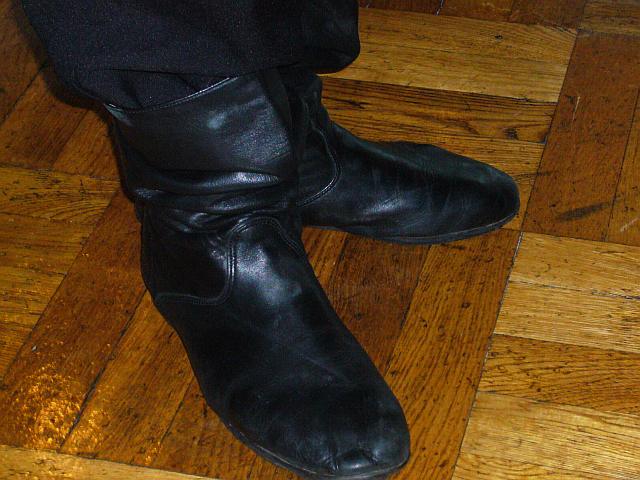 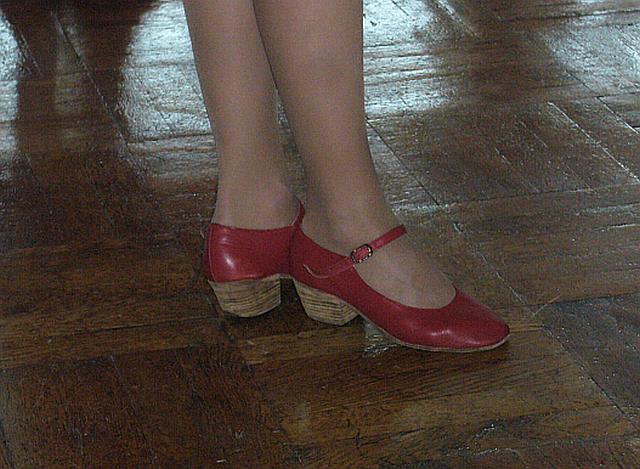  Boots and Shoes
 Handkerchief Barynya is a fast Russian folk dance and music. The word barynya (Russian: landlady) was used by simple folk as a form of addressing to a woman of higher class, a feminine form for the word "barin," landlord. A number of Russian folkloric dance ensembles bear the name Barynya. The Barynya dance is an alternation of chastushkas and frenetic dancing. The Barynya chastuskas used to have the refrain, kind of "Barynya, barynya, sudarynya-barynya." The content was often humoristic, even lewd. The dancing was without special choreography and consisted mainly of fancy stomping and traditional Russian squatwork - knee bending (vprisyadku). There are a number of scenic, more refined versions of the dance. Kamarinskaya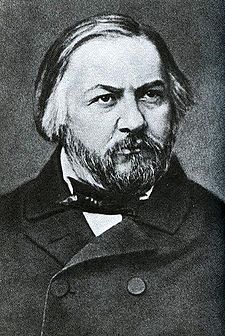 Mikhail Glinka/Russian Composer/Father of Russian classical music The following is a direct quote (with some grammatical and spelling corrections) from: Kamarinskaya "Tchaikovsky once wrote: "All of the Russian symphonic school is contained in Glinka's Kamarinskaya, just as all of an oak tree is in an acorn." Though this is obviously a wonderful compliment about the work that many consider to be Glinka's crowning orchestral achievement, it is also a commentary on Glinka's career, for he is revered by many as the "father of Russian music." Some have gone so far as to say that before Glinka there was no Russian music. Prior to him, Russian composers were basically content to copy the Central European styles, because it was those composers and performers who visited the major Russian cities. However, Glinka was the first to use Russian folk materials in his original compositions, and thus he virtually founded the 19th century school of Russian Romanticism. Kamarinskaya was completed in 1848 and is subtitled "Fantasy for Orchestra on Themes of Wedding Songs and Dances." For the two years leading up to 1847, Glinka had lived in Spain where his fascination with the music of that region resulted in several colorful works such as Jota Aragonesa and Summer Night in Madrid. He returned to Smolensk, happy to be back with his family and friends, but his pleasure was short-lived, for within a year he was in great demand to play piano at balls and parties. Unwilling to respond to these newly found social pressures, he retreated with a few companions to Warsaw. While in Poland, inspiration struck. He wrote: "By chance I discovered a relationship with the wedding song, 'From behind the mountains, the high mountains,' which I had heard in the country, and the dance tune 'Kamarinskaya,' which everyone knows. And suddenly my fantasy ran high; instead of a piano piece I wrote an orchestral piece called Wedding Tune and dance tune. An associate who observed tree composer while he worked gives us an insight into Glinka's powers of concentration: " ... he was writing it out, like an ordinary mortal jotting down hasty notes, and at the same time he talked and joked with me, Soon afterwards two or three friends arrived, but he carried on through loud laughter and conversation, in no way hindered by this: and during this he was noting down one of his most remarkable compositions." The music opens with a brief introduction based upon a section: the Wedding Tune, after which we hear the melody three times with contrasting accompaniments, The Dance Tune (Kamarinskaya), which is only four bars long, is then heard in a rapid fire sequence of thirteen variations. After a repetition of the Wedding Tune, the music closes with twenty-one more repetitions of the Dance Tune. Glinka's facility at combining these two radically different melodies is nothing short af amazing as is his sense of instrumental color and the ingenuity he summoned to build such an entertaining composition from these relatively trivial sources." KhorovodKhorovod is an art form of Eastern Slavs, a combination of a circle dance and chorus singing, similar to Chorea of ancient Greece. TroikaTroika is a Russian folk dance, where a man dances with two women. The Russian word troika means three-horse team/gear. In the Russian dance the dancers imitate the prancing of horses pulling a sled or a carriage. This dance is included into repertoires of virtually all Russian ethnographic dance ensembles. Similar folk dances are known among other Slavic peoples, e.g., the Polish Trojak. A Cajun dance of the same name, Troika, exists, and is very similar to the Russian dance. It is hypothesized that the Cajun version of the dance originated at the times when Cossacks of the Russian tsar army were stationed in Paris. For More Information: Barynya |